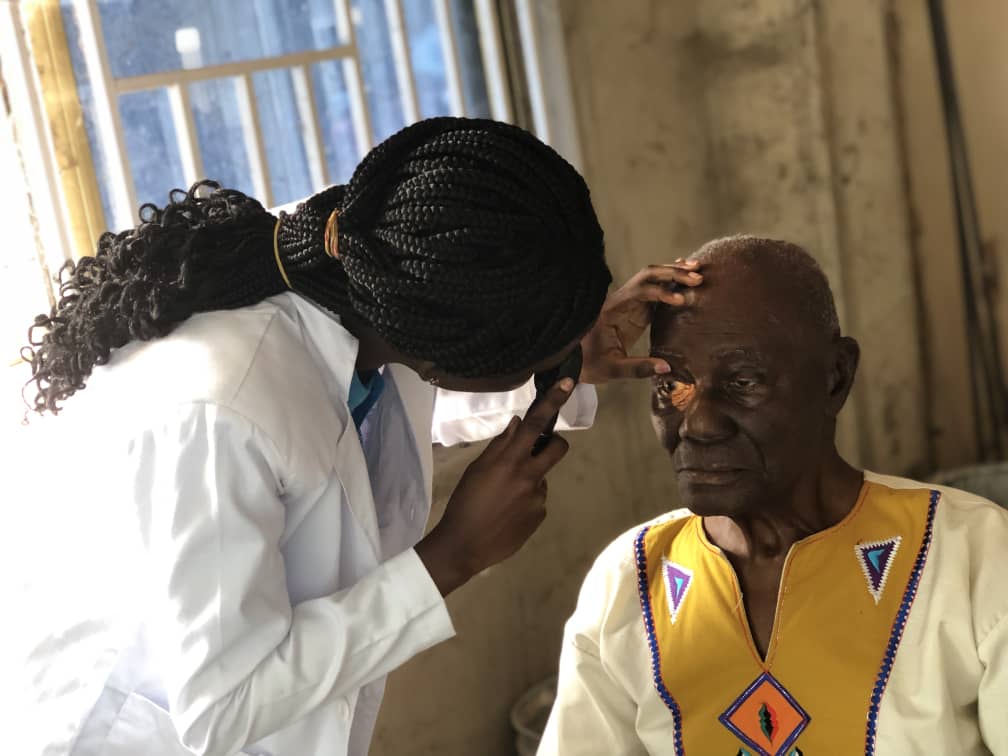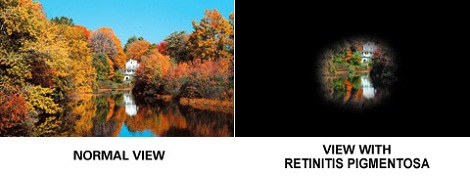Retinitis Pigmentosa (RP) is the name given to a group of inherited eye diseases that affect the light-sensitive rods and cones in the retina, the back part of our eyes. RP is a retinal degenerative disease characterized by pigment deposits predominant in the peripheral retina and by a relative sparing of the central retina. In most of the cases of RP, there is a primary degeneration of the photoreceptor rods, with secondary degeneration of cones. Thus, the typical Retinitis Pigmentosa is also described as a rod-cone dystrophy. RP is considered to be one of the most frequent causes of blindness during working life in the industrialized countries.
Causes
Retinitis pigmentosa is an inherited disorder, and therefore not caused by injury, infection or any other external or environmental factors. All mendelian inheritance have been reported but autosomal dominant , recessive and X-linked are the most frequently seen. The eye condition is associated with at least 32 different genes, which control traits that are passed along in a number of different ways. For Autosomal Recessiv , Retinitis Pigmentosa patients with a family history of similarly affected relatives are called multiplex where those with no family history are classified as simplex .Simplex individuals are usually assumed to represent autosomal recessive inheritance, although some of those cases may be de novo(starting from beginning) or unrecognized X-linked inheritance. When simplex cases are included, autosomal recessive cases of retinitis pigmentosa have been reported to account for approximately 50-60% of all cases with the exact percentage varying from country to country. When the trait is recessive, it tends to first appear when people are in their 20s. When the trait is dominant, it is more likely to show up when people are in their 40s. Males with X-linked RP typically have more severe retinal degenation compared to autosomal recessive and dominant forms of the disease
Etiology
In 1990, the first gene involved in RP, Rhodopsin, has been identified . It encodes the rod visual pigment. Since then, it has been established that mutations in many genes may cause RP . RP is characterized by enormous genetic heterogeneity. At least 45 different genes and loci have been identified to cause nonsyndromic RP so far. Most mutations affect rods selectively and, through an unknown pathway, cause apoptotic death of the rod cells (clinically leading to night blindness and substantial defects in the peripheral visual field). Cones are seldom directly affected by the identified mutations, but in many cases they degenerate secondarily to rods (clinically leading to visual field constriction, loss of central vision and complete blindness).
Association of Retinitis Pigmentosa
I Ocular associations. These include myopia, primary open angle glaucoma, microphthalmos, conical cornea and posterior subcapsular cataract.
II. Systemic associations. These include Laurence-Moon-Biedl syndrome, Cockayne’s syndrome, Refsum’s syndrome,Usher’s syndrome, Hallgren’s syndrome. Some Syndromic forms of RP are Abetailpoproteinemia,Alstrom syndrome,bardet-biedl syndrome,Refsum disease etc.

What is @bettervision about?
@bettervision is is a project initiated by @nattybongo and friends to give back to the society the knowledge and skill acquired through the Optometric Studies in Kwame Nkrumah University of Science and Technology, Ghana.It is an outreach system where we visit the less privileged communities to offer free eye screening services and education to the people within the community
AIMS AND OBJECTIVES
To reduce or prevent vision loss through diseases such as glaucoma, cataract and refractive errors.
To enlighten the majority of the Ghanaian population about the importance of proper visual care.
To conscientize people on the need for regular eye checks
To get more people to have their wards screened within the Critical periods of a Child’s Vision Development; thus from ages 3 to till about 10 years.
To help the blind and people with low vision live a better life within the society through education of the general public to stop stigmatization.
To help in the fight of extreme poverty that puts the health of people at risk



